In the ever-evolving world of the automotive industry, the competition between compact SUVs and luxury performance vehicles is heating up. Today, we compare the Ford Puma and the Porsche Cayenne, two models that embody distinct philosophies within the SUV segment. While the Puma is focused on efficiency and practicality, the Cayenne represents a fusion of performance and luxury.
Ford Puma vs Porsche Cayenne – Performance, range & efficiency compared
Both models have their strengths – but which one suits you more?
Compare performance, efficiency, price and space directly: Ford Puma or Porsche Cayenne?
Design and Dimensions
The Ford Puma boasts a compact yet sporty design, measuring 4186 mm in length and 1805 mm in width, making it perfect for urban settings. With a height of 1550 mm, it offers a commanding view of the road while still being manageable for city driving. In contrast, the Porsche Cayenne is a full-sized luxury SUV, measuring a substantial 4930 mm in length and 1989 mm in width, with a height ranging from 1652 mm to 1698 mm. This size provides a more spacious interior and a powerful road presence.
Powertrain and Performance
The Ford Puma comes equipped with a variety of efficient powertrains, including petrol MHEV and electric options. The engine choices range from 125 to 168 hp, paired with either a manual or dual-clutch automatic transmission, providing acceleration from 0 to 100 km/h in as quickly as 7.4 seconds. With a front-wheel-drive configuration, the Puma delivers a fuel consumption of between 5.4 to 6.0 L/100km and an electric range of up to 376 km.
In stark contrast, the Porsche Cayenne offers a more powerful lineup, featuring petrol and plug-in hybrid variants with power outputs from 353 to a staggering 739 hp. The Cayenne's all-wheel-drive system enhances its performance, allowing it to accelerate from 0 to 100 km/h in as little as 3.6 seconds. However, this performance comes at a cost, with fuel consumption ranging from a mere 1.4 L/100km (for the hybrid) up to 12.6 L/100km for traditional petrol variants.
Interior and Technology
Inside, the Ford Puma is designed with practicality in mind, offering a trunk capacity of 456 to 523 liters, which is quite generous for a compact SUV. The cabin is equipped with modern technology, including Ford's latest infotainment system, providing a seamless connection to smartphones and navigation systems for both driver and passengers.
The Porsche Cayenne, on the other hand, is the epitome of luxury and technology. With an interior that features high-quality materials and advanced infotainment options, the Cayenne allows drivers to personalize their experience. The trunk capacity can range from 434 to 772 liters, providing ample space for all your travel needs. The Cayenne also incorporates cutting-edge driving assistance features, enhancing safety and driving comfort.
Innovations and Sustainability
Both vehicles incorporate innovative technologies but cater to different markets. The Ford Puma emphasizes its electric and hybrid systems, reflecting the current trend towards sustainability. Its integration of mild-hybrid technology not only adds efficiency but also contributes to a lower CO2 output, with some models reaching an efficiency class of A.
The Porsche Cayenne introduces high-performance electric options while maintaining its luxury appeal. The plug-in hybrid models offer substantial electric ranges of around 74 km, making it more practical for daily driving. This balance allows the Cayenne to remain competitive in an increasingly eco-conscious market while delivering class-leading performance.
Conclusion
In conclusion, the Ford Puma and Porsche Cayenne represent two very different facets of the SUV world. The Puma appeals to those seeking a compact and efficient vehicle that does not compromise on style and practicality. Meanwhile, the Cayenne caters to luxury enthusiasts wanting exhilarating performance and advanced technology. The choice between the two ultimately comes down to what the driver values most—versatility and efficiency versus luxury and power.
Here’s where it gets real: The technical differences in detail
Costs and Efficiency:
When it comes to price and running costs, the biggest differences usually appear. This is often where you see which car fits your budget better in the long run.
Ford Puma has a significantly advantage in terms of price – it starts at 24800 £, while the Porsche Cayenne costs 87000 £. That’s a price difference of around 62229 £.
Fuel consumption also shows a difference: Porsche Cayenne manages with 4 L and is therefore distinct more efficient than the Ford Puma with 5.40 L. The difference is about 1.40 L per 100 km.
As for range, the Ford Puma performs decisively better – achieving up to 376 km, about 293 km more than the Porsche Cayenne.
Engine and Performance:
Power, torque and acceleration say a lot about how a car feels on the road. This is where you see which model delivers more driving dynamics.
When it comes to engine power, the Porsche Cayenne has a convincingly edge – offering 739 HP compared to 168 HP. That’s roughly 571 HP more horsepower.
In acceleration from 0 to 100 km/h, the Porsche Cayenne is convincingly quicker – completing the sprint in 3.60 s, while the Ford Puma takes 7.40 s. That’s about 3.80 s faster.
In terms of top speed, the Porsche Cayenne performs distinct better – reaching 305 km/h, while the Ford Puma tops out at 210 km/h. The difference is around 95 km/h.
There’s also a difference in torque: Porsche Cayenne pulls significantly stronger with 950 Nm compared to 290 Nm. That’s about 660 Nm difference.
Space and Everyday Use:
Whether family car or daily driver – which one offers more room, flexibility and comfort?
Both vehicles offer seating for 5 people.
In curb weight, Ford Puma is convincingly lighter – 1316 kg compared to 2130 kg. The difference is around 814 kg.
In terms of boot space, the Porsche Cayenne offers distinct more room – 772 L compared to 523 L. That’s a difference of about 249 L.
In maximum load capacity, the Porsche Cayenne performs distinct better – up to 1708 L, which is about 425 L more than the Ford Puma.
When it comes to payload, Porsche Cayenne noticeable takes the win – 705 kg compared to 469 kg. That’s a difference of about 236 kg.
Who comes out on top?
Overall, the Porsche Cayenne shows itself to be outperforms in nearly all aspects and secures the title of DriveDuel Champion.
It convinces with the more balanced overall package and proves to be the more versatile choice for everyday use.
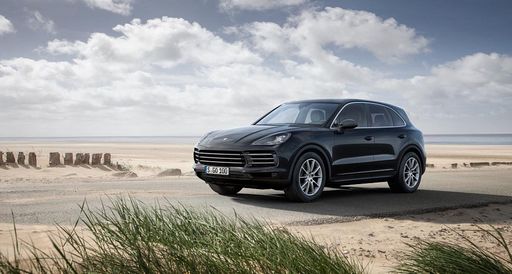
Porsche Cayenne
Ford Puma
The Ford Puma presents itself as a stylish compact SUV with a distinctive design that combines practicality with a dynamic driving experience. Its sleek lines and sporty aesthetics make it stand out on the road, while the interior offers a comfortable and tech-savvy environment. With an emphasis on efficiency and a smooth drive, the Ford Puma is well-suited for both urban commutes and countryside adventures.
details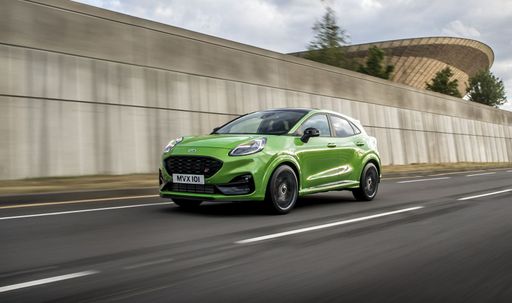 @ puma.fordpresskits.com
@ puma.fordpresskits.com
 @ puma.fordpresskits.com
@ puma.fordpresskits.com
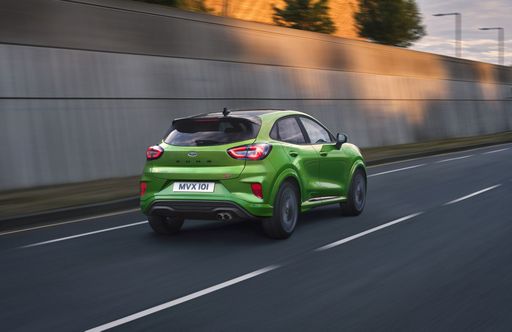 @ puma.fordpresskits.com
@ puma.fordpresskits.com
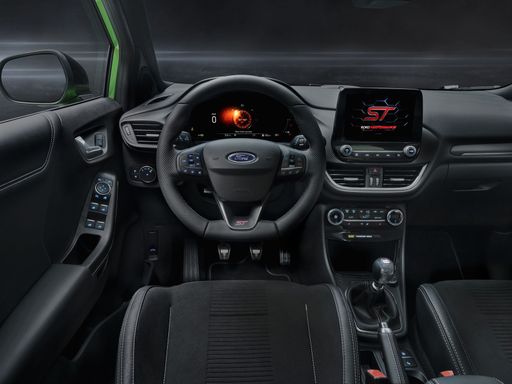 @ puma.fordpresskits.com
@ puma.fordpresskits.com
Porsche Cayenne
Der Porsche Cayenne präsentiert sich als beeindruckender Vertreter der Premium-SUVs und verbindet kraftvolles Design mit luxuriösem Komfort. Sein dynamisches Fahrverhalten und die hochwertigen Materialien im Innenraum machen jede Fahrt zu einem besonderen Erlebnis. Zudem bietet der Cayenne modernste Technologiefunktionen, die sowohl Unterhaltung als auch Sicherheit gewährleisten.
details @ Porsche Media Deutschland
@ Porsche Media Deutschland
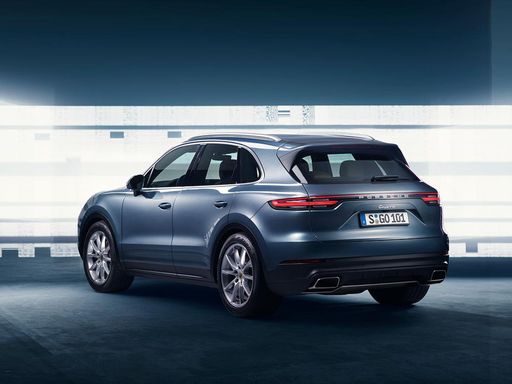 @ Porsche Media Deutschland
@ Porsche Media Deutschland
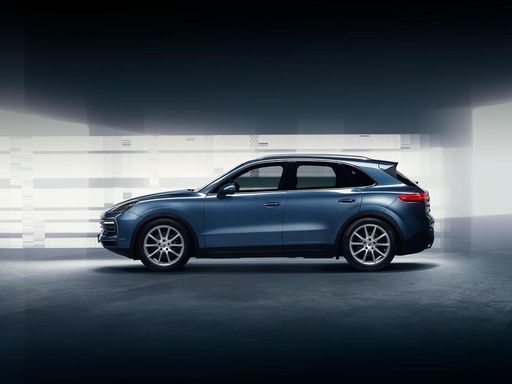 @ Porsche Media Deutschland
@ Porsche Media Deutschland
 @ Porsche Media Deutschland
@ Porsche Media Deutschland
 @ Porsche Media Deutschland
@ Porsche Media Deutschland

|

|
|
|
|
Costs and Consumption |
|
|---|---|
|
Price
24800 - 36300 £
|
Price
87000 - 186400 £
|
|
Consumption L/100km
5.4 - 5.9 L
|
Consumption L/100km
4 - 12.2 L
|
|
Consumption kWh/100km
13.1 - 13.9 kWh
|
Consumption kWh/100km
-
|
|
Electric Range
361 - 376 km
|
Electric Range
74 - 83 km
|
|
Battery Capacity
43 kWh
|
Battery Capacity
21.80 kWh
|
|
co2
0 - 135 g/km
|
co2
90 - 277 g/km
|
|
Fuel tank capacity
42 L
|
Fuel tank capacity
70 - 90 L
|
Dimensions and Body |
|
|---|---|
|
Body Type
SUV
|
Body Type
SUV
|
|
Seats
5
|
Seats
4 - 5
|
|
Doors
5
|
Doors
5
|
|
Curb weight
1316 - 1563 kg
|
Curb weight
2130 - 2670 kg
|
|
Trunk capacity
456 - 523 L
|
Trunk capacity
434 - 772 L
|
|
Length
4186 - 4226 mm
|
Length
4930 mm
|
|
Width
1805 mm
|
Width
1983 - 1989 mm
|
|
Height
1550 - 1555 mm
|
Height
1652 - 1698 mm
|
|
Max trunk capacity
1216 - 1283 L
|
Max trunk capacity
1344 - 1708 L
|
|
Payload
367 - 469 kg
|
Payload
365 - 705 kg
|
Engine and Performance |
|
|---|---|
|
Engine Type
Electric, Petrol MHEV
|
Engine Type
Petrol, Plugin Hybrid
|
|
Transmission
Automatic, Manuel
|
Transmission
Automatic
|
|
Transmission Detail
Reduction Gearbox, Manual Gearbox, Dual-Clutch Automatic
|
Transmission Detail
Automatic Gearbox
|
|
Drive Type
Front-Wheel Drive
|
Drive Type
All-Wheel Drive
|
|
Power HP
125 - 168 HP
|
Power HP
353 - 739 HP
|
|
Acceleration 0-100km/h
7.4 - 9.8 s
|
Acceleration 0-100km/h
3.6 - 6 s
|
|
Max Speed
160 - 210 km/h
|
Max Speed
248 - 305 km/h
|
|
Torque
170 - 290 Nm
|
Torque
500 - 950 Nm
|
|
Number of Cylinders
3
|
Number of Cylinders
6 - 8
|
|
Power kW
92 - 124 kW
|
Power kW
260 - 544 kW
|
|
Engine capacity
999 cm3
|
Engine capacity
2995 - 3996 cm3
|
General |
|
|---|---|
|
Model Year
2025
|
Model Year
2025
|
|
CO2 Efficiency Class
A, D
|
CO2 Efficiency Class
G, B, C
|
|
Brand
Ford
|
Brand
Porsche
|
Is the Ford Puma offered with different drivetrains?
The Ford Puma is offered with Front-Wheel Drive.
The prices and data displayed are estimates based on German list prices and may vary by country. This information is not legally binding.
